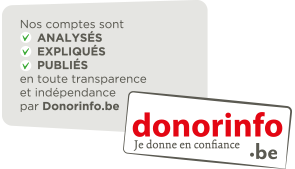Recycling 1: Avoid shiny wrapping paper
- Not recyclable: most glossy or laminated gift wrap and many ribbons, especially those with wire mesh
- Recyclable: newsprint, paper grocery bags or other natural-fiber paper; scarves (Kurashiki), reusable gift bags, shopping bags or totes
Recycling 2: Avoid online shopping to limit the number of boxes shipped
- Most cardboard boxes are high-value recyclables, but the sheer volume means they often overflow the recycling bins and end up in the trash.
Recycling 3: Throw disposable plates, napkins and paper towels in the trash or compost
- Not recyclable: soiled paper cups, plates and napkins; most plastic food ware (which is usually made of mixed or low-grade plastics); paper towels
- Recyclable: often other plastic food and cardboard containers, e.g. pizza boxes and plastic bottlecaps
- Toys: If toys are made up of several materials (two types of plastics or multiple materials besides plastics) which can’t be separated easily, it’s better to donate the toy – if it’s working – or to throw it in the garbage than to toss it in the recycling bin.
 Don’t be fooled by the three-arrow triangle. Many people associate the three angles forming a triangle with the three tenets of the circular economy: reduce, reuse and recycle. But if that symbol appears on a plastic item, it doesn’t necessarily mean it’s recyclable. It just indicates a resin code or the type of plastic the item is made of. Different municipalities can recycle different resins, but only number 1 and 2 plastics are recyclable in most places. So if you see a number 3, 4 or 7, for example, the item probably isn’t recyclable. Look for the resin symbol and check it against your local guidelines to find out if yours are recyclable in your area.
Don’t be fooled by the three-arrow triangle. Many people associate the three angles forming a triangle with the three tenets of the circular economy: reduce, reuse and recycle. But if that symbol appears on a plastic item, it doesn’t necessarily mean it’s recyclable. It just indicates a resin code or the type of plastic the item is made of. Different municipalities can recycle different resins, but only number 1 and 2 plastics are recyclable in most places. So if you see a number 3, 4 or 7, for example, the item probably isn’t recyclable. Look for the resin symbol and check it against your local guidelines to find out if yours are recyclable in your area.
Recycling 4: Make sure jars are empty
- Make sure to fully empty your bottles, glass jars and phials. No need to rinse them.
- Place metal tops, caps and lids in the blue bag or container
- Place plastic tops in the white bag or grey/black container
Recycling 5: Think beyond the kitchen
Use recycling bins elsewhere in the house as well. If you’re having a party, consider placing pop-up recycling bins around the house.
Recycling 6: Avoid using plastic bags
Since 2019, residents in some parts of Belgium can begin tossing all their plastic containers and plastic wrap in the blue PMD recycling bag.
However, plastic bags and other films tend to clog up the recycling system and could shut it down temporarily by getting bound up in the equipment. Limit their storage at landfills by bringing your own reusable bag or bring bags back to grocery and retail stores.
Energy saving 1: Light up your tree with LED
Whether you like to deck the halls or put up a simple tree, using LED holiday lights is the smartest choice for energy savings. LED Christmas lights use only 10% of the energy that regular bulbs use. They are also much safer than their incandescent or halogen counterparts because they generate only a fraction of the heat. With LEDs, there’s no need to panic if you accidentally leave the lights on overnight.
Energy saving 2: Keep it cozy without turning up the heat
When you have guests over, you can actually turn down the thermostat a few degrees. Why? Because a room full of warm bodies will heat up on its own without running up your heating bill. The more guests, the merrier (and the cozier). Keep in mind that for every degree you lower your thermostat, you can save up to 3% on your electric bill.
Energy saving 3: Use your kitchen wisely
Cooking for a crowd? When you’ve got a big holiday meal to make, you can save energy by baking several dishes at the same time. Your oven will use the same amount of electricity to heat up one dish as opposed to a full rack. There’s also no need to preheat the oven for dishes with a long baking time, such as your Thanksgiving turkey or Christmas ham. Just pop your dish in at the beginning and add a couple extra minutes to the timer.
Energy saving 4: Beware of vacation vampires
You might use the holidays as an opportunity to travel, visit family, or go on vacation. Keep in mind that when you leave your home for long periods of time, you might still be wasting electricity. Unplug your electronics before you leave to avoid using vampire energy, which is when electricity slowly drains from plugged-in outlets. You should also make sure your large appliances and electronics are turned off completely. Computers and laptops use significant amounts of energy even while they’re in sleep mode.
Energy saving 5: Practice green gift giving
If you’re buying electronics or appliances this holiday season, look for the Energy STAR label to ensure your device has the best energy-saving technology. Buying electronics also presents a good opportunity to use rechargeable batteries rather than disposable ones. While rechargeable batteries have a higher up-front cost than regular batteries, they end up saving you money in the long run since you won’t have to replace them when they die. They’re also better for the environment because they reduce the amount of toxic chemicals released into landfills.
Sources:
https://www.thebulletin.be/all-plastics-be-recycled-blue-bag-starting-2019
https://www.theguardian.com/vital-signs/2014/dec/25/how-to-recycling-christmas-packaging-wrapping-plastic-bags
https://www.arp-gan.be/en/sorting/6-glass-waste.html
https://www.smartenergy.com/5-ways-to-save-energy-during-the-holidays/
https://ec.europa.eu/info/sites/info/files/dgenergy_energylabel_200319.gif
https://ec.europa.eu/info/energy-climate-change-environment/standards-tools-and-labels/products-labelling-rules-and-requirements/energy-label-and-ecodesign/about_en


